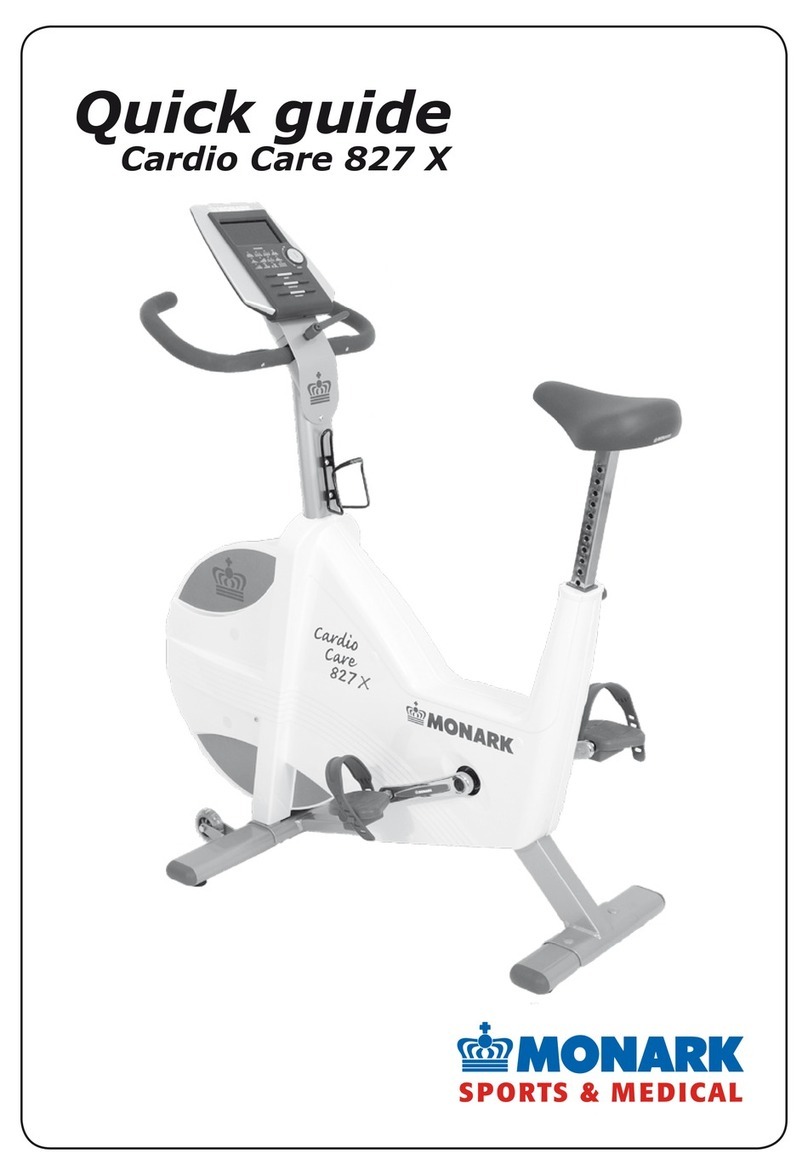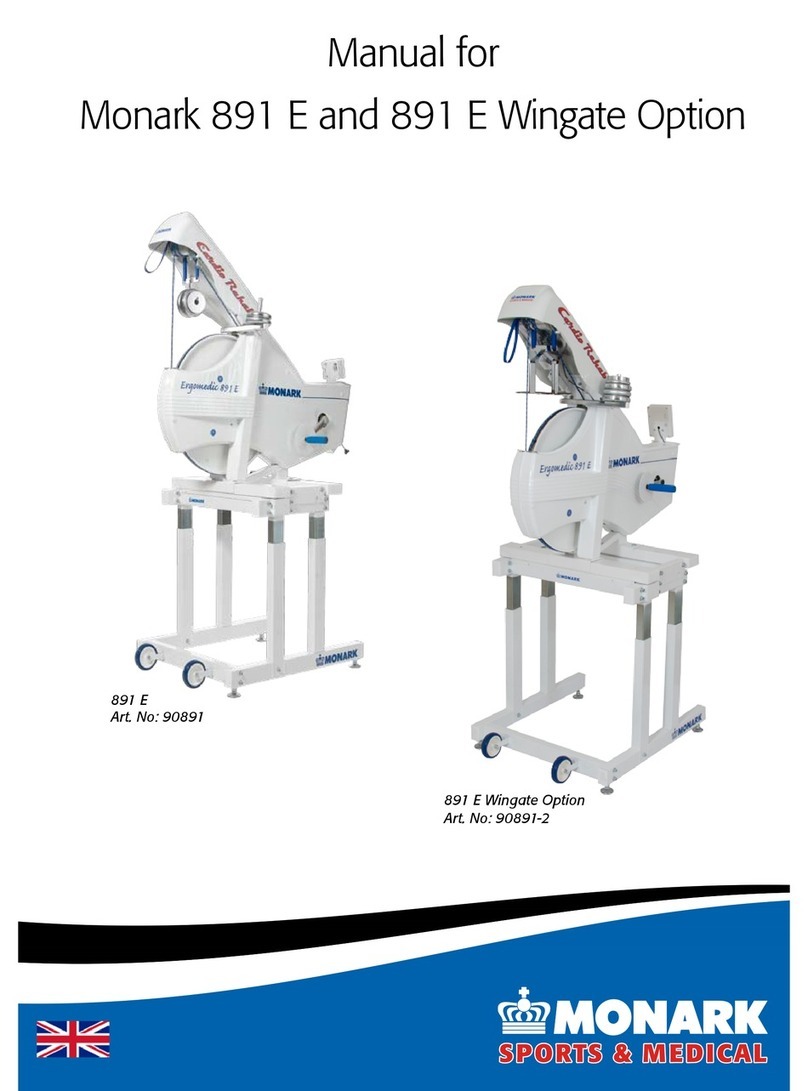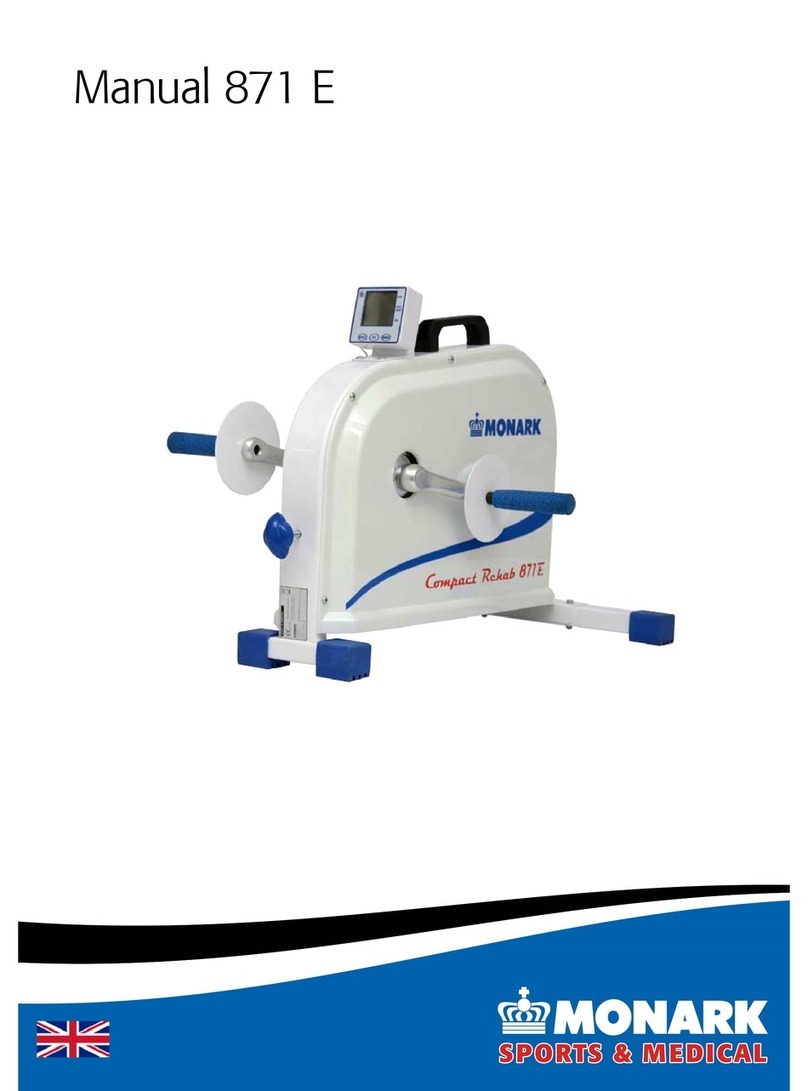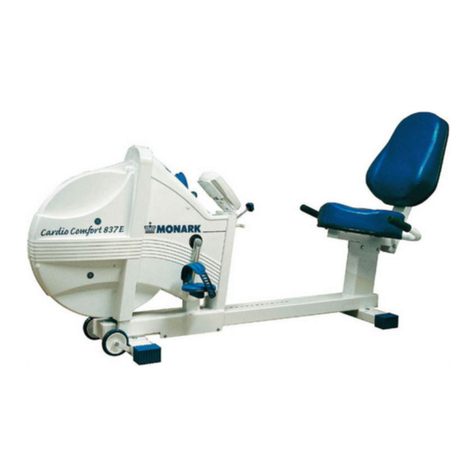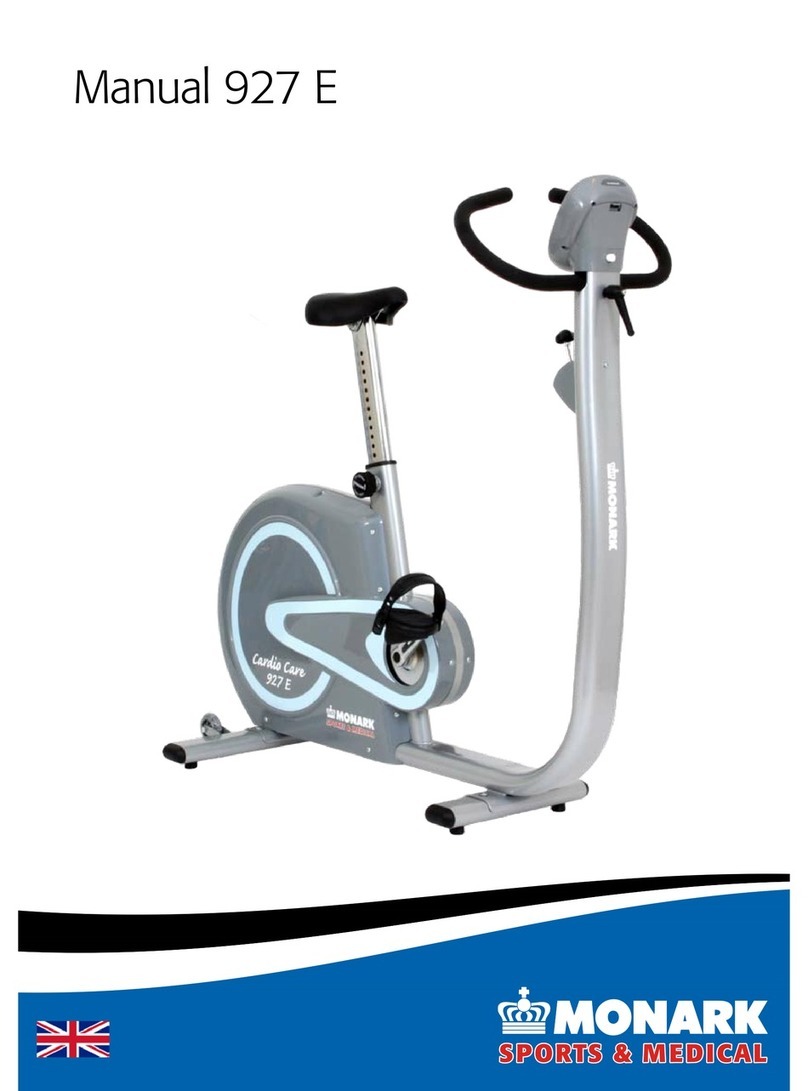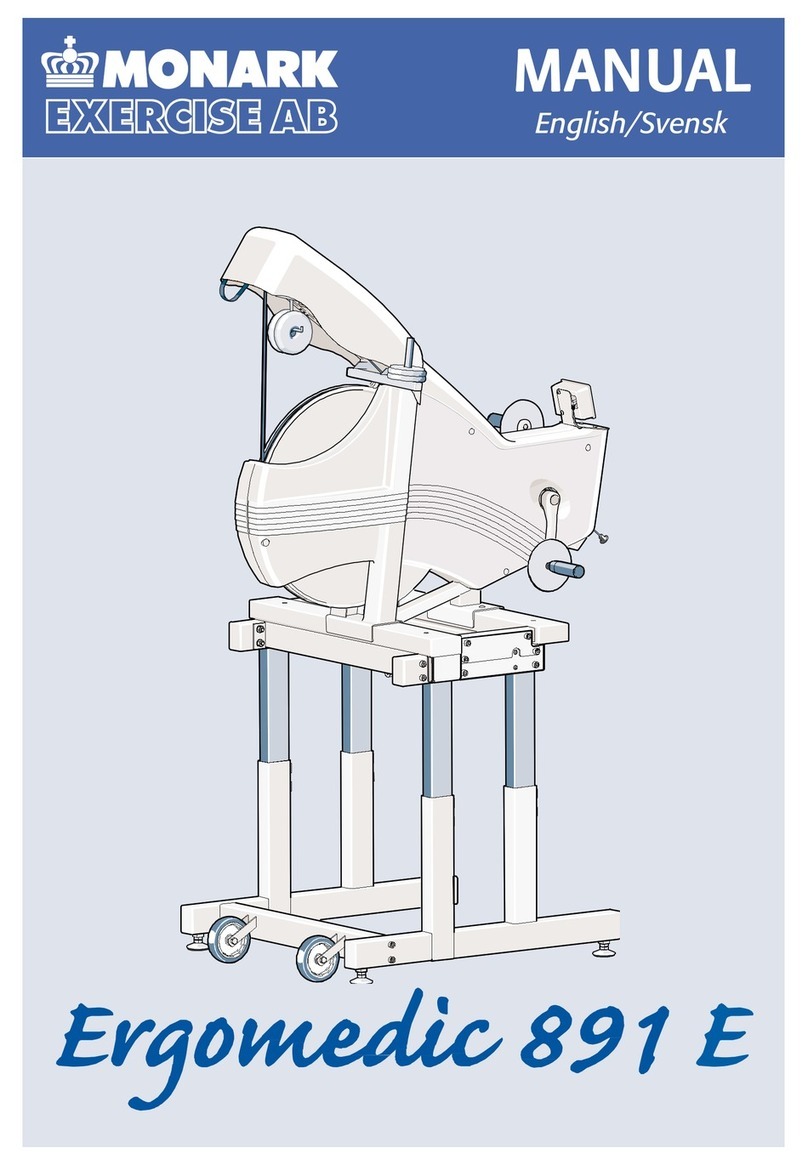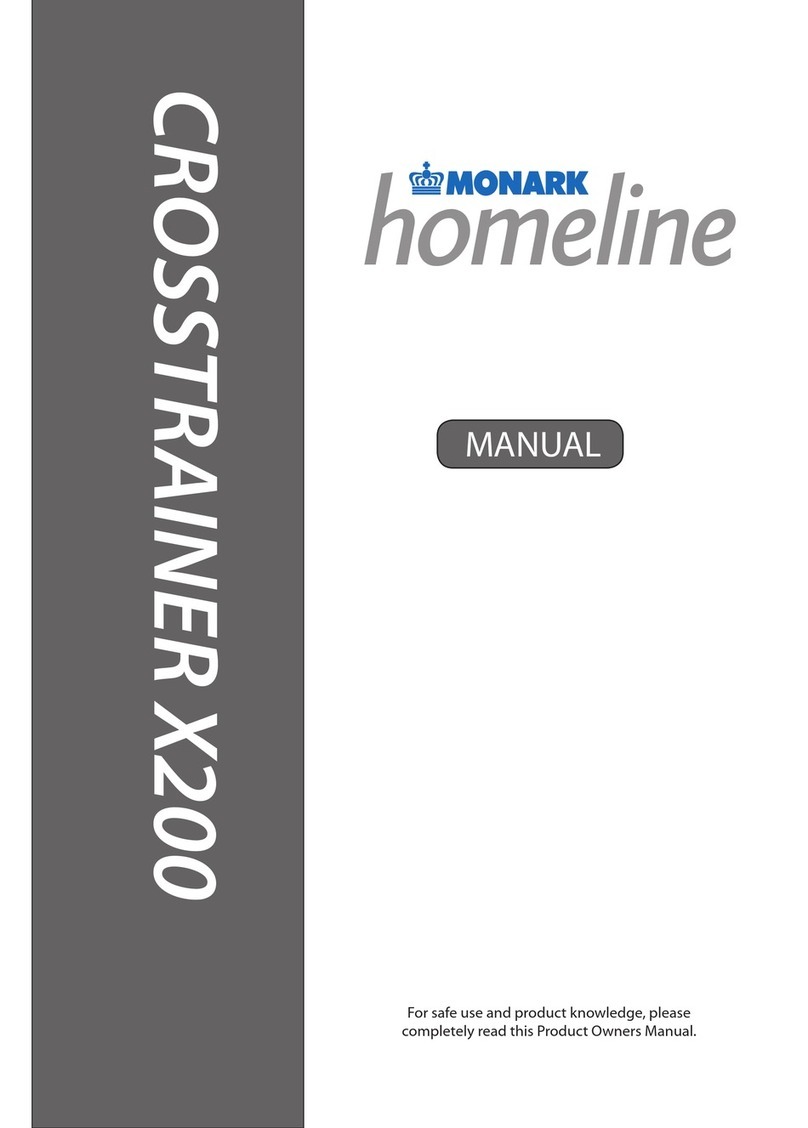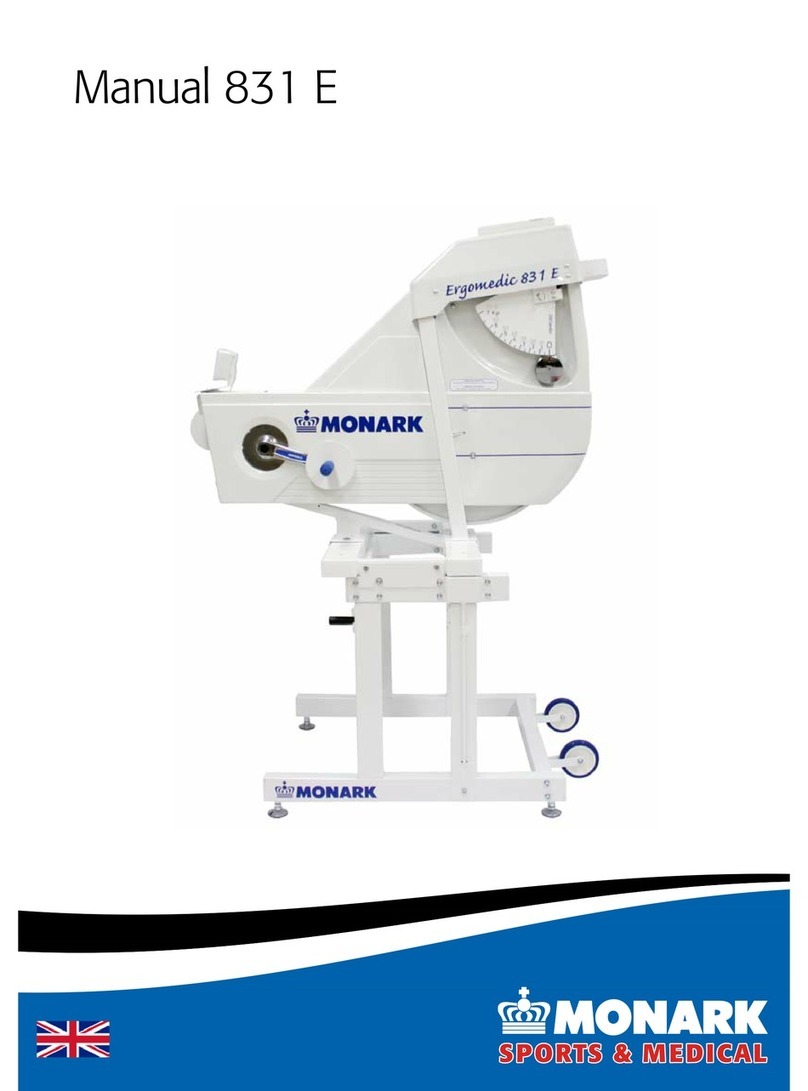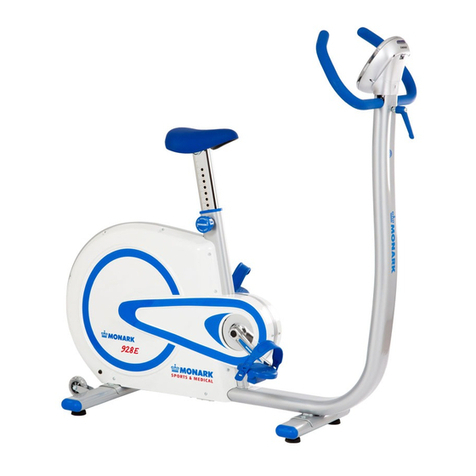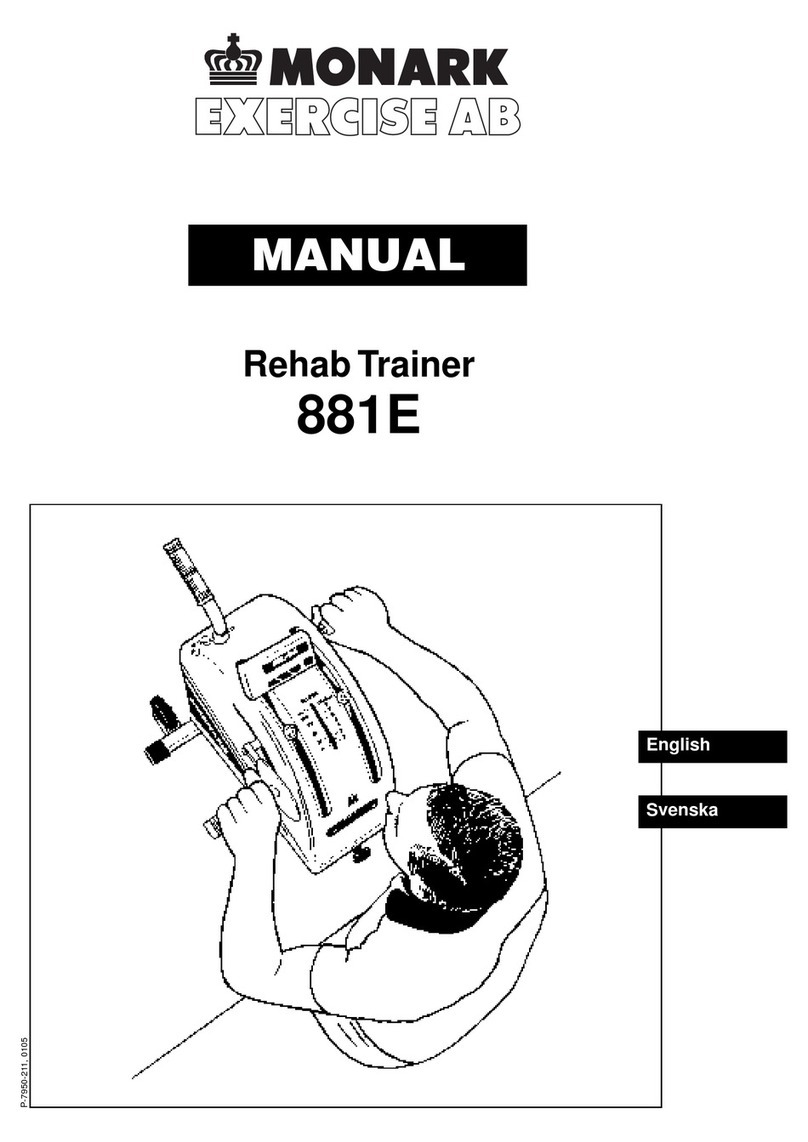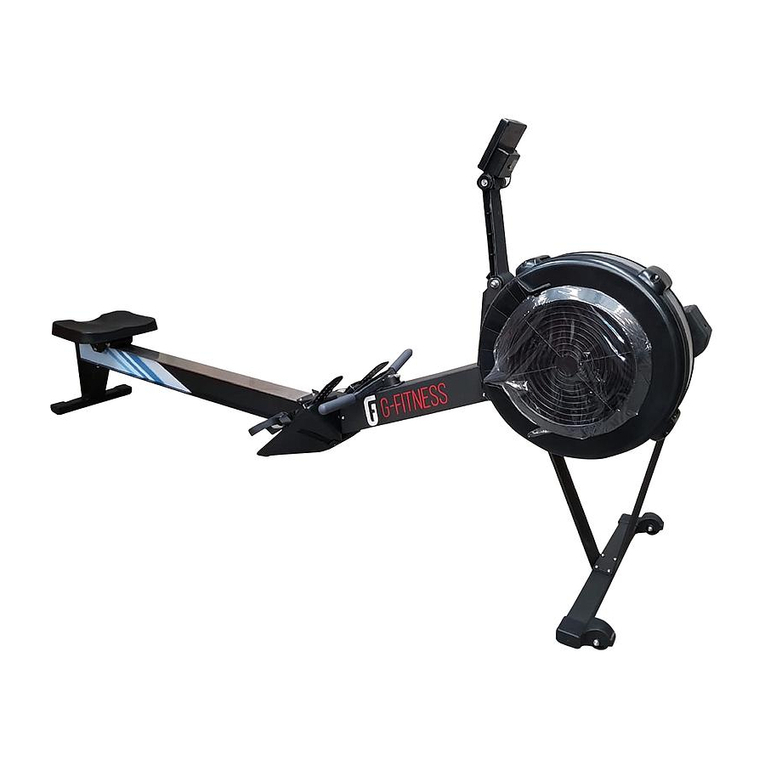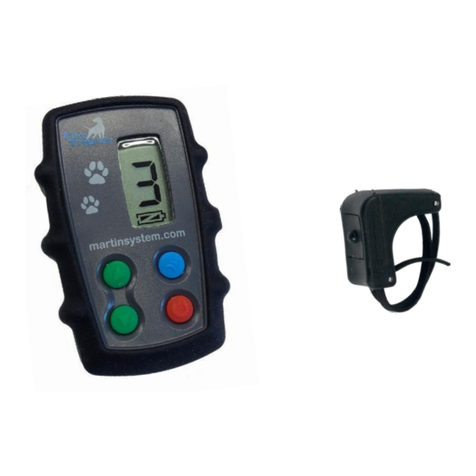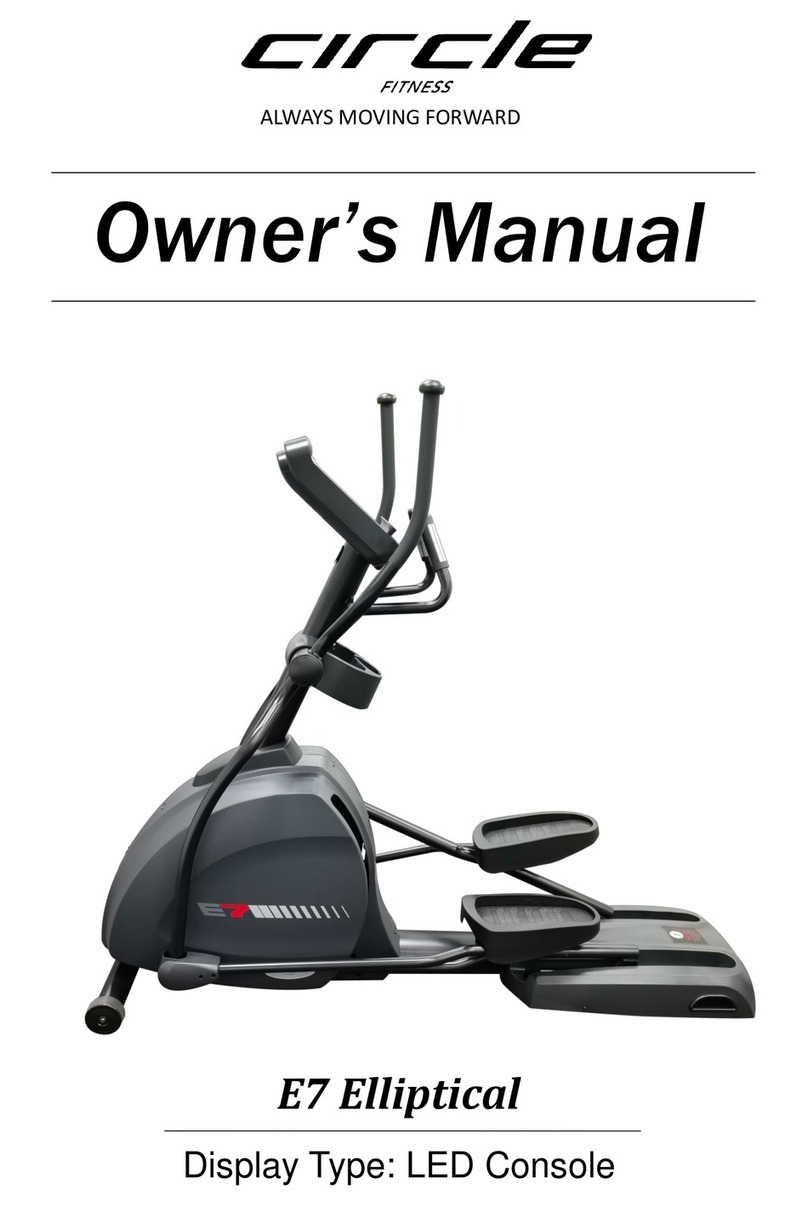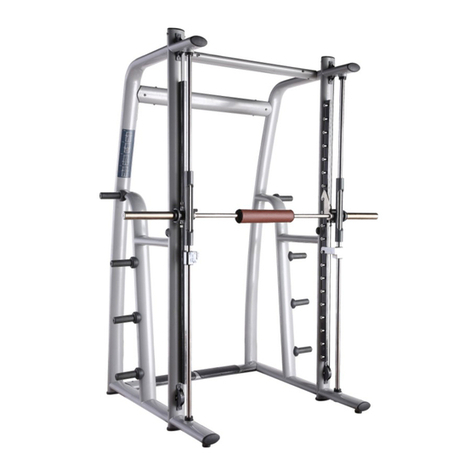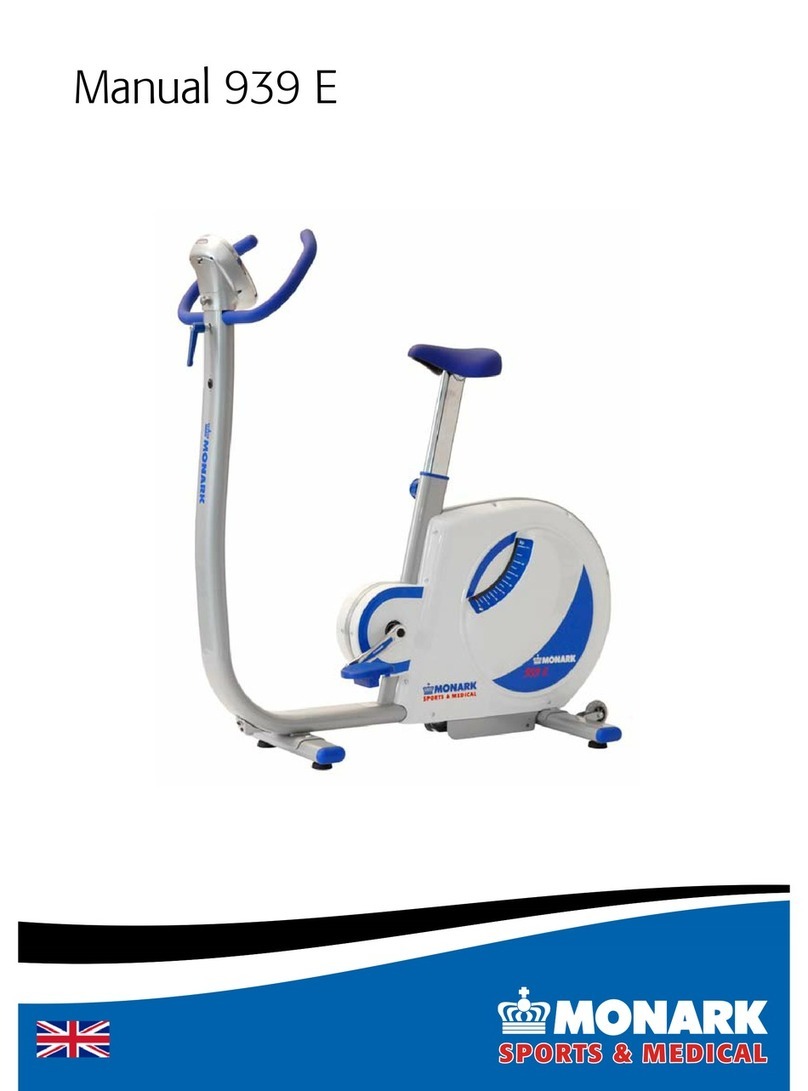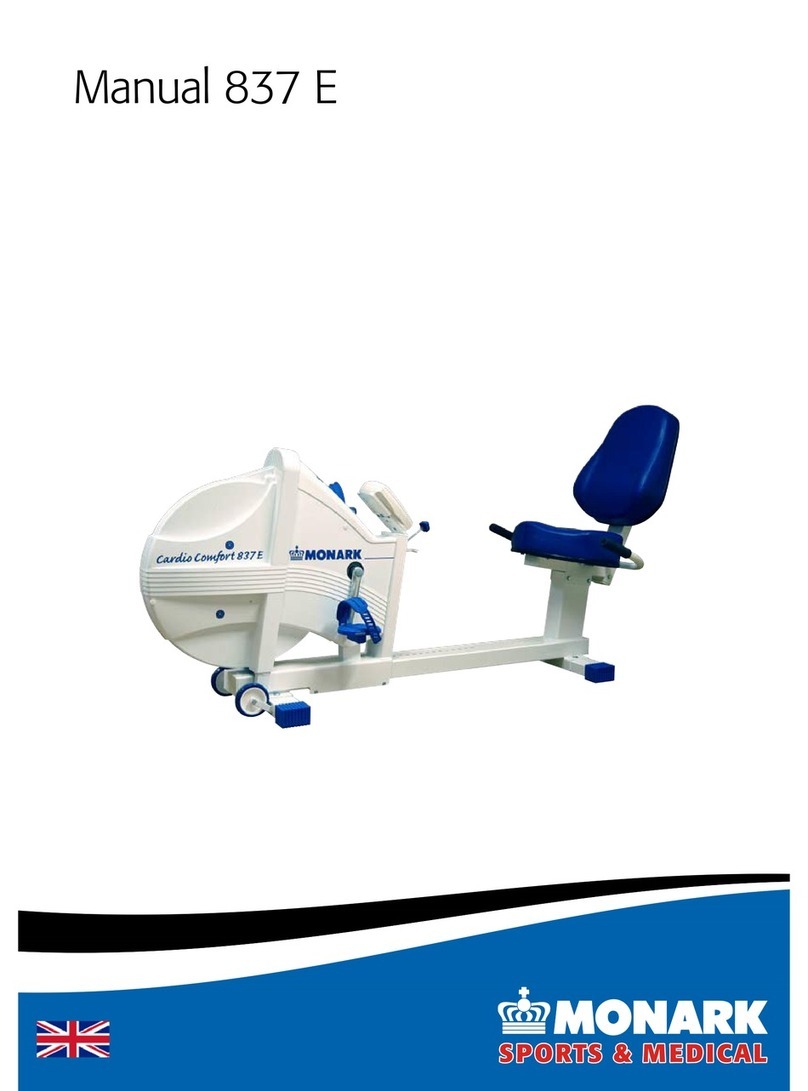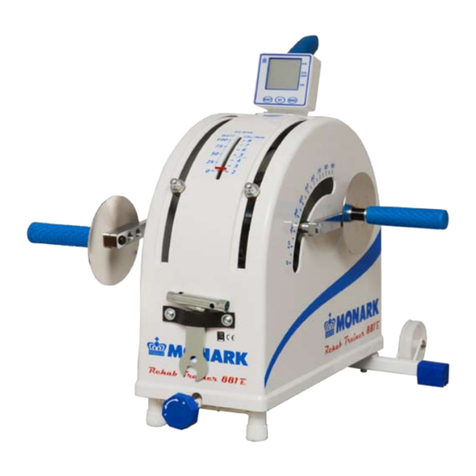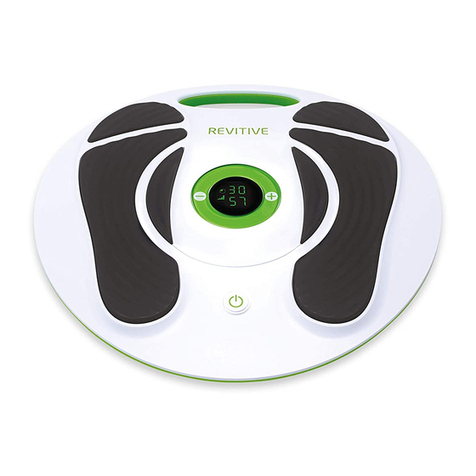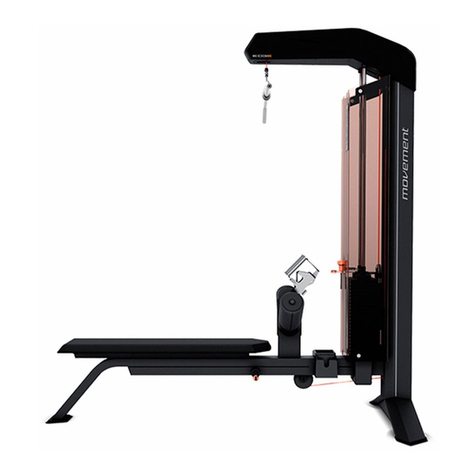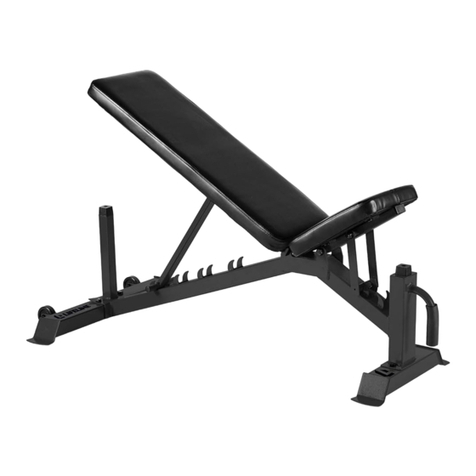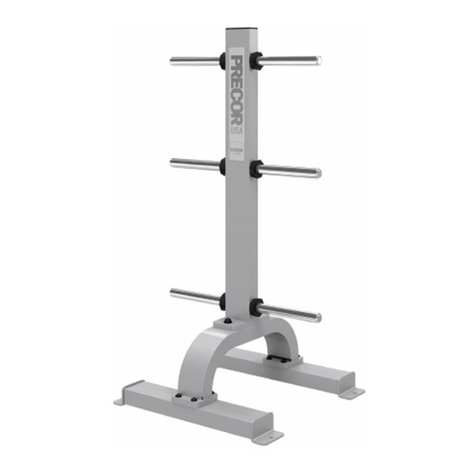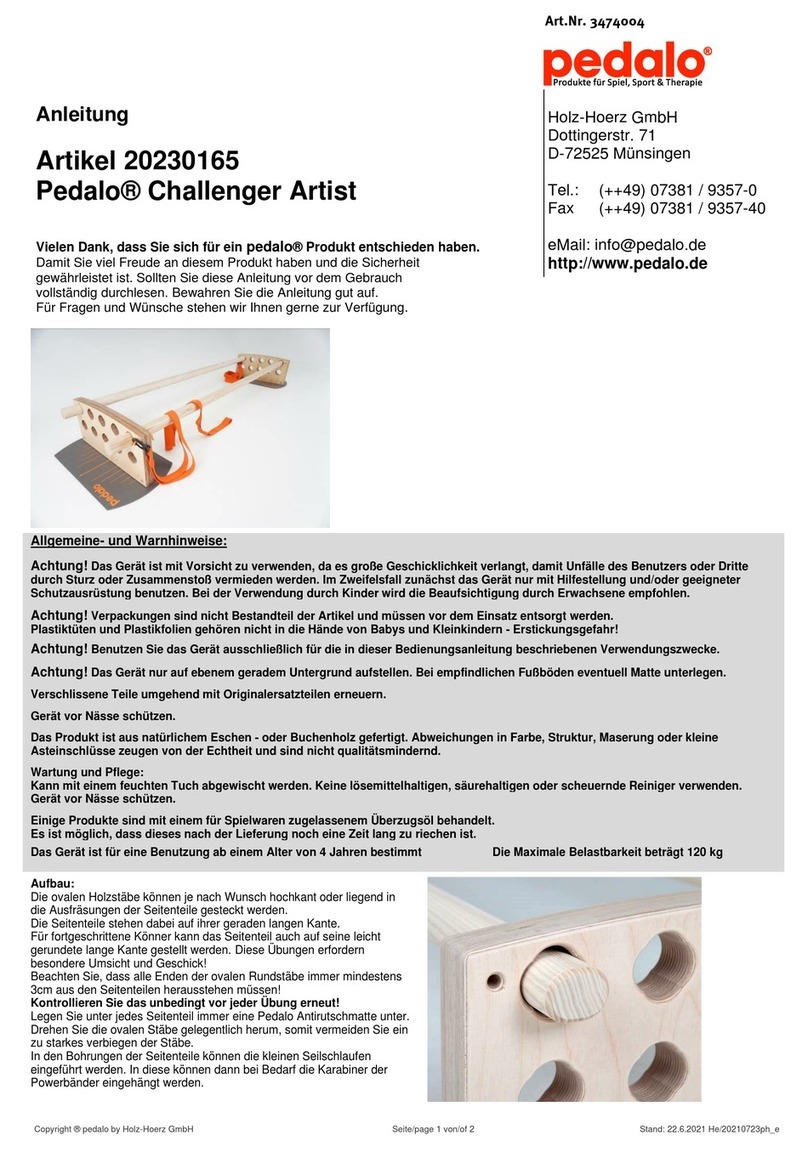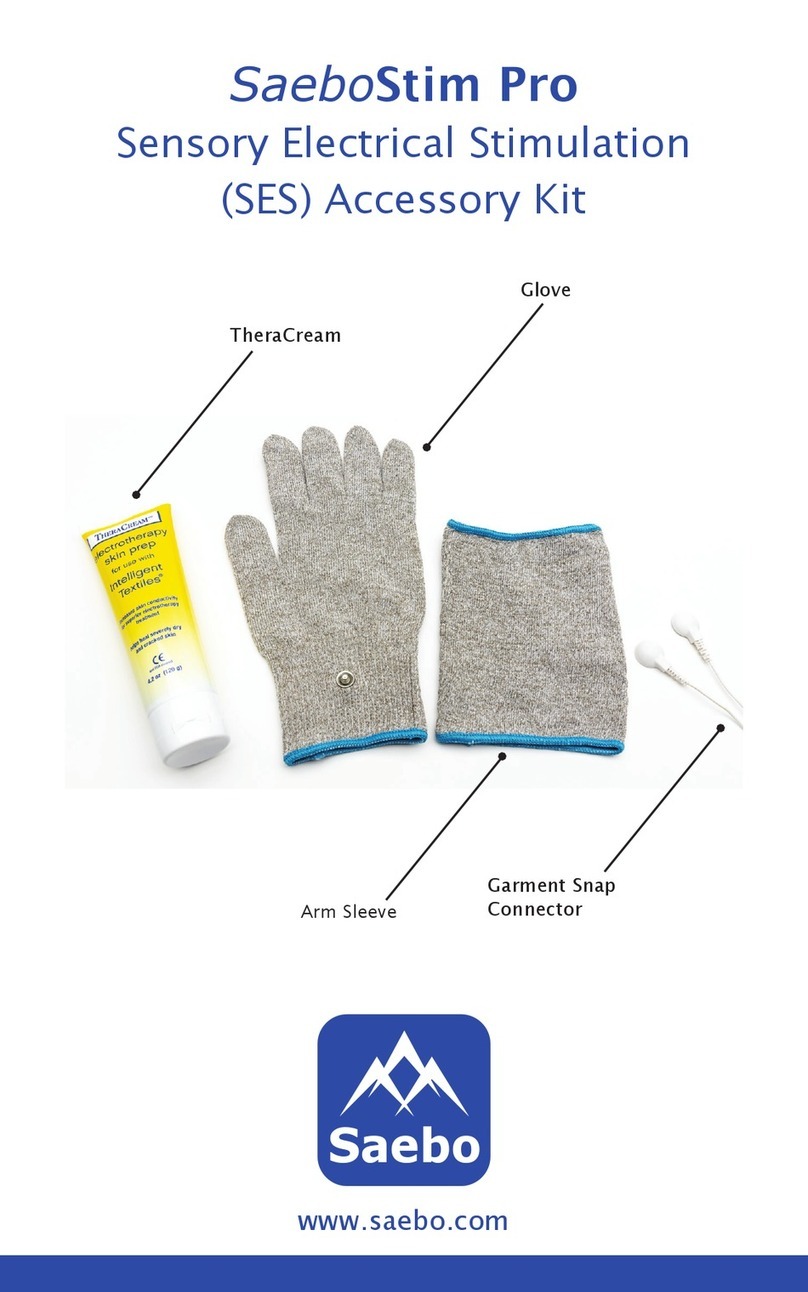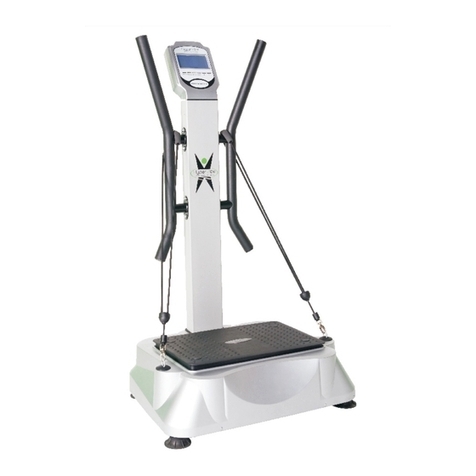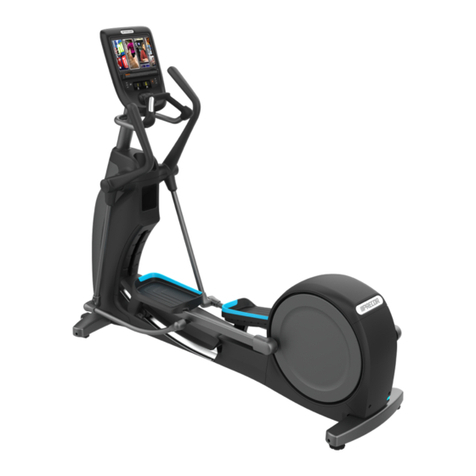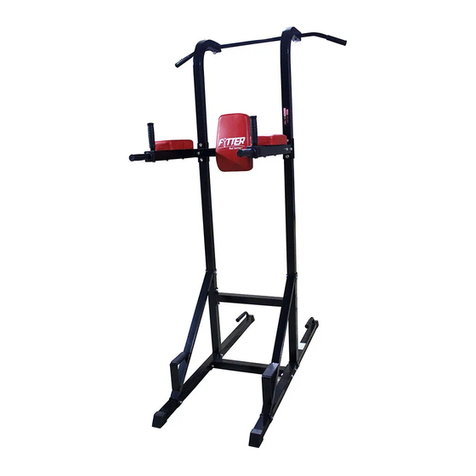Power on crank or flywheel
When the Ergomedic 939 E is adapted to fitness tests
it is set to measure the power on the flywheel.
When the Ergomedic 939 Medical is adapted to
ECG work tests it is set to measure the power on the
crank.
A sticker, placed on the display, see fig: RPM meter
and ECG-sticker, informs that the ergometer is set to
measure the power on the crank.
Fig: RPM meter
and ECG-sticker
Operating Instruction
RPM meter
The RPM figures on the LCD screen are large and
easy to read. The screen turns on automatically when
the pedals are moved and turns off after three minutes
of inactivity. See fig: RPM meter and ECG-sticker.
Operation of the ergometer
The Ergomedic 939 E is built on a stabile frame, a large
well balanced flywheel, a break belt and a pendulum
weight which measures the force. Pedals and a chain
drive are provided to spin the flywheel as a tension
device tightens the belt to regulate the braking force
applied to the wheel. The pendulum indicates the
applied force directly on the scale located on the left
side of the flywheel.
The computer system consists of one main unit and
one control unit (terminal, PC or ECG). The main
unit reads in the pedal speed, the applied force
and determines the subjects heart rate by a chest
transmitter. Additionally, the base controll activates
the motor to adjust the tension of the belt, thereby
regulating the applied braking force. The force may
be automatically varied in response to changes in
pedal speed to maintain a constant power workload.
For information about how respective control units
works, see respective sections.
The Monark Ergometer 939 E can be controlled
externally from a terminal, a computer or an ECG
device.
The control is performed over a serial line using ANSI/
ISO/ASCII format commands. The interface is a 9-pin
male D-sub connector, compatible with the RS232
standard, located on the front of the bike above the
front support tube. See fig: Connections.
It is also possible to use an analogue control from an
external source to set the workload. This is done by
the contacts b32 and z32 on the main connector on
the bike.
The ergometer need not be turned off prior to
connection of the external components, although
removing the power from all devices may prevent
erroneous data transfer between equipment during
interconnection. Caution must be exercised in the
connection of various types of equipment from
different manufactures to avoid electrical hazards and
physical damage. The user must be certain that the
instrument connector and the cable are designed for
the intended purpose. Serious injury to the user and/
or equipment may result if inappropriate connections
are attempted.
Distance meter, miles
Energy kcal
Heart rate beats/minute (bpm)
Force Newton (N), kp
Power Watts (W), kpm/min or
VO2ml/min/kg
Time min:sec
Weight kilogram (kg), pounds (lb)
Measured quantities
Hereareinstructionsforconnectionsandopportunities
for connection to external communication. The need
for advanced technical documentation / protocols
for systems building, contact Monark Exercise AB,
Sweden.
Batteries: 2 x 1.5 V, R14
Storing temperature: -10º C - +60º C
Operating temperature: 0º C - +50º C
